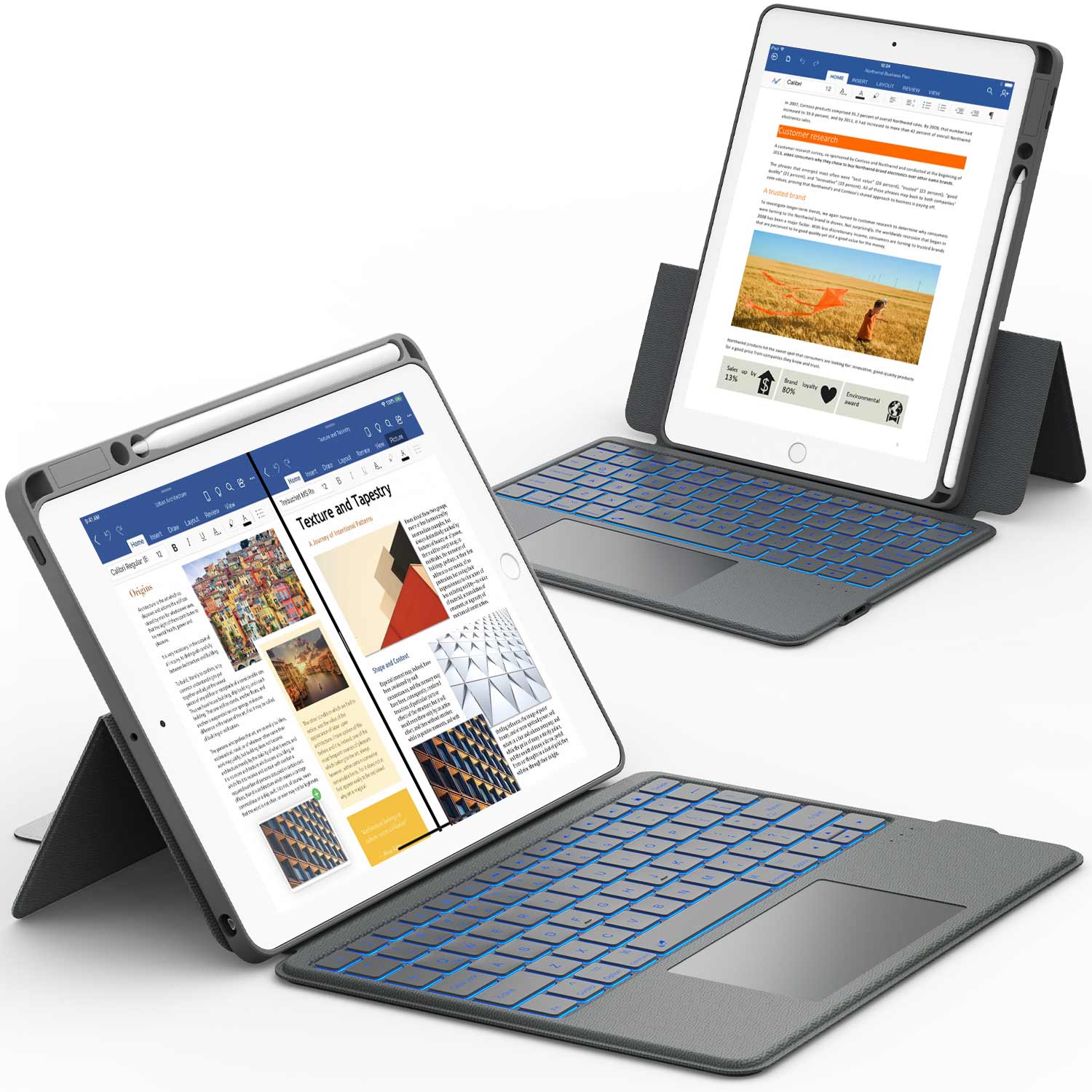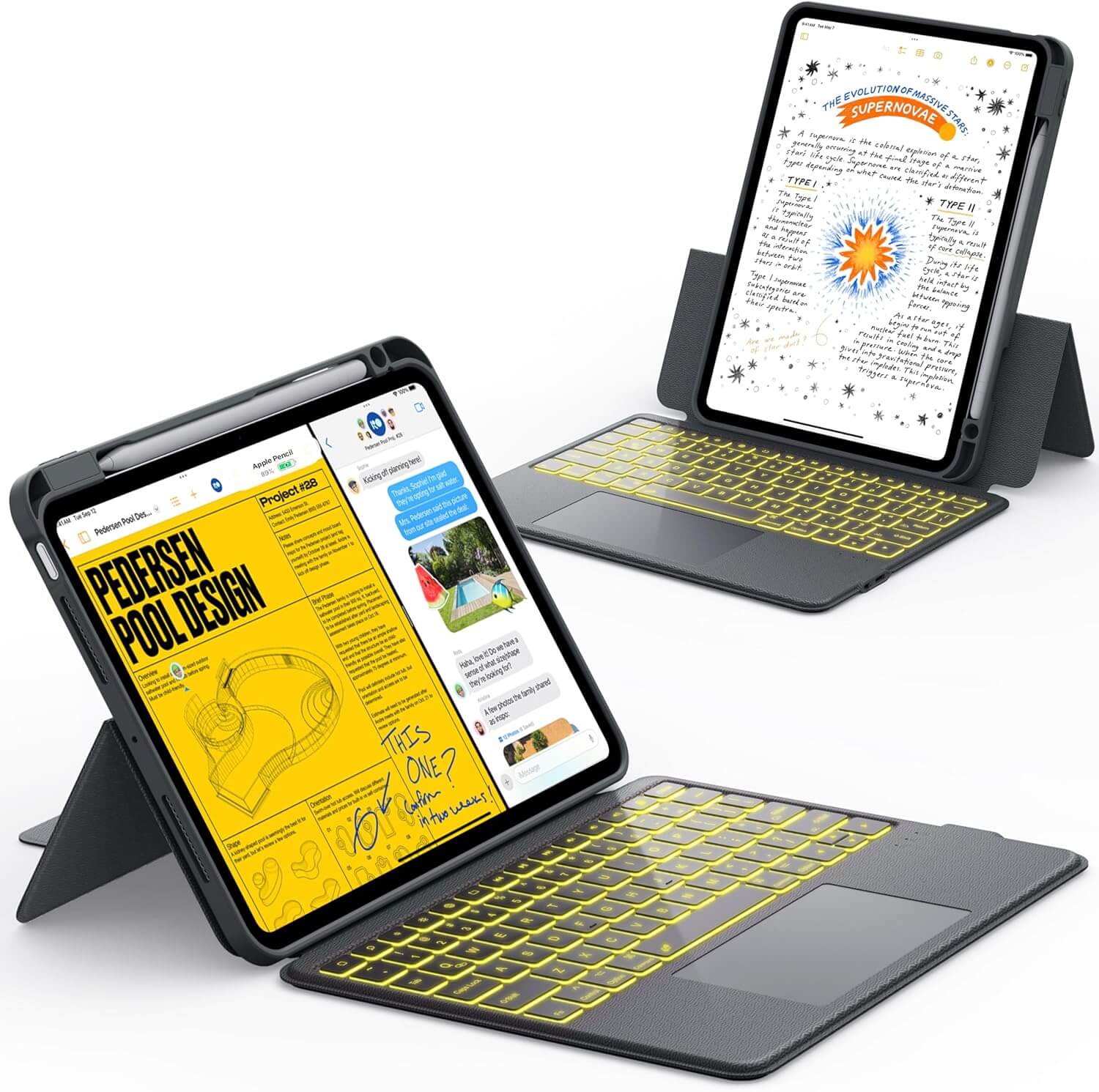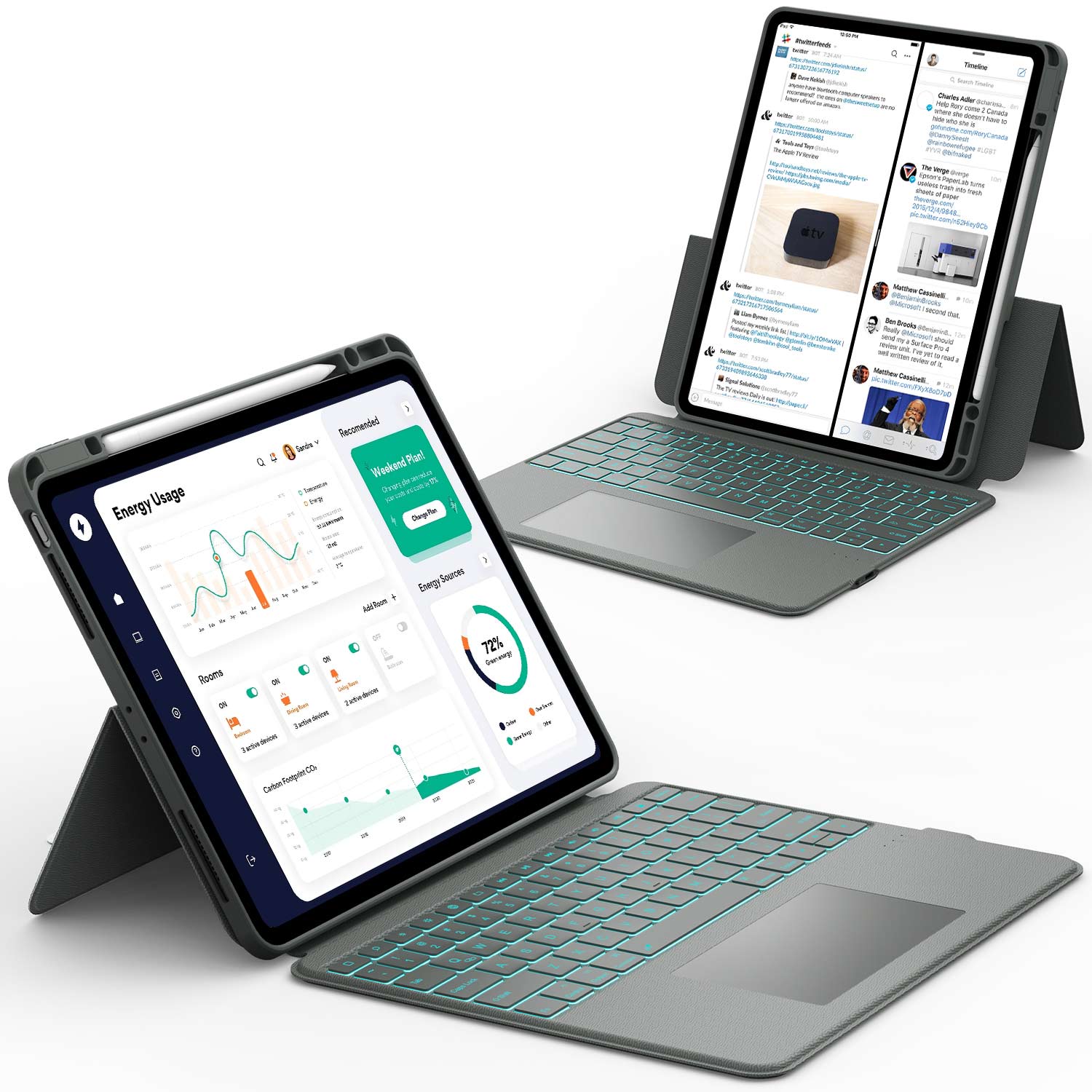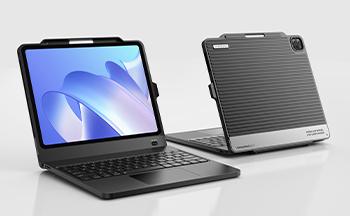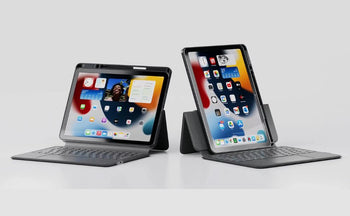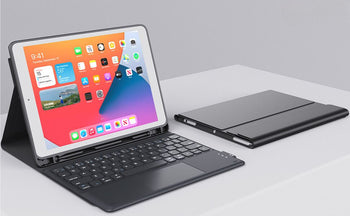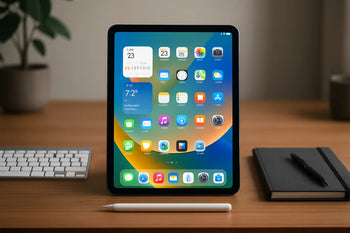If you've ever wondered, can iPads get viruses, the simple answer is yes, but it's very rare. Apple builds iPads with some pretty tough security features that shield you from most everyday threats.
Unlike regular computers, iPads run apps in their own little bubbles, so viruses can't easily jump from one place to another.
While traditional viruses that replicate and spread are rare on iPads, iPads can still be affected by other forms of malware. The iOS operating system is designed with security features that isolate apps, making it difficult for malware to spread.
However, malicious software, like adware or spyware, can still infiltrate an iPad through various means, such as compromised apps from unofficial sources or phishing attacks.
Watch for weird behavior and keep your software updated—that goes a long way toward keeping your iPad safe.
Can iPads Get Viruses?

iPads come packed with strong protections, so viruses are rare, but not impossible. The system and the way Apple controls apps really help block most threats.
Still, some risks are out there. Knowing how these protections work makes it easier to stay out of trouble.
iPadOS Sandboxing & App Store Vetting Stop Most Threats
Apple’s iPadOS uses sandboxing. This keeps every app in its own lane, away from the rest of your device.
So, even if something harmful sneaks in, it can't easily mess up the whole system.
Apple only lets you download apps from the Apple App Store, unless you jailbreak. Every app goes through a review before it hits the store.
This process checks for malware and other issues, keeping most viruses out.
With these layers in place, viruses on iPads are super rare. Still, it’s smart to keep your iPad updated and stick with apps you actually trust.
Rare Risks: Jailbroken Devices, Exploits Like Pegasus
If you jailbreak your iPad, you remove the built-in protections. Jailbreaking opens the door to apps from outside the App Store, which ramps up your risk for malware.
Attackers love jailbroken iPads because they have fewer security controls.
Some advanced exploits, like Pegasus spyware, can infect iPads without you clicking anything shady. These attacks are rare and usually target high-profile people.
They take advantage of software flaws in iPadOS or certain apps.
If you steer clear of jailbreaking and keep your software current, your risk stays low. But hey, it's worth knowing these threats exist.
Need more space for your files and apps? See if adding external storage is worth it in, iPad External Storage: Smart Buy or Skip It?
What Kinds of Threats Can Hit an iPad?

Your iPad dodges a lot of risks that other devices face, but it’s not totally bulletproof. Some threats try to trick you into handing over info or installing bad stuff.
Others use fake alerts or sneaky messages to steal data or mess with your device. Knowing what’s out there helps you stay sharp.
Malware, Spyware, Adware via Phishing & Links
Malware is software built to mess with your iPad or steal your info. Spyware quietly tracks what you do, and adware just floods you with annoying ads.
Phishing emails or shady websites often deliver these threats. Phishing tries to fool you into clicking links or sharing passwords by pretending to be someone you trust.
Tap a dangerous link and you might install malware or spyware—especially if you’ve jailbroken your iPad. Jailbreaking strips away some of Apple’s protections, making things riskier.
To keep safe, stay picky about links and stick to the official App Store for downloads.
Browser Scams or Deceptive Pop-Ups, Not True Viruses
Lots of pop-ups and warnings on your iPad try to scare you into thinking you’ve got a virus. These scams push you to download fake security apps or give up personal details.
They're just tricks, using social engineering to get your money or data. They don’t actually put real viruses on your iPad.
Real computer viruses that spread and break things are incredibly rare on iPads, thanks to Apple’s security. Still, don’t tap on weird pop-ups or share your info with random alerts.
If something feels off, just close the browser or app and move on.
Not sure which iPad model you own? Find out quickly with our guide, Which iPad Do I Have? How To Figure What iPad Model You Have.
How Do I Know If My iPad Has Malware?

Maybe your iPad feels sluggish, the battery drains faster than usual, or it just acts weird. Sometimes apps crash or your data usage jumps for no good reason.
These changes can tip you off that something’s not right.
Symptoms: Slow Speed, Battery Drain, Odd Pop-Ups
If your iPad suddenly slows down, malware could be running in the background. Apps might take ages to open or web pages might crawl.
Your battery could drain quickly, even if you’re not doing anything different.
Watch out for unexpected pop-ups or fake virus warnings. These messages usually try to trick you into clicking or downloading something sketchy.
If you see strange alerts, don’t tap on them. Double-check the URL, too—most of the time, it’s just phishing, not real malware.
Using Apple’s Find My iPad can help if your device goes missing and starts acting up, since hackers sometimes try to get in remotely.
Strange Apps or Data Usage Spikes
Keep an eye out for apps you don’t remember installing or ones that act up, like crashing or behaving oddly. Malware sometimes hides in fake or copycat apps.
Check your data usage in Settings. If it suddenly spikes, malware could be sending info from your device without you knowing.
If you spot weird apps or notice a data surge, delete anything suspicious right away. Keeping your iPad updated and sticking to the App Store helps you avoid these headaches.
How to Protect Your iPad From Threats

Keeping your iPad safe isn’t rocket science. Just a few key steps make a big difference.
Stay up-to-date with software, skip risky moves, and use trusted sources. Strong security settings help, too.
Keep iPadOS & Apps Updated; Don’t Jailbreak
Install iPadOS updates as soon as Apple releases them. They patch security holes and fix bugs that hackers might use.
Keep your apps updated, too. Developers push out fixes for vulnerabilities, so let your iPad update apps automatically.
Don’t jailbreak your iPad. Jailbreaking removes Apple’s safety nets and lets you install unapproved apps, which is just asking for trouble.
Set a strong passcode, and use Touch ID or Face ID if you can. That way, even if your iPad gets lost or stolen, it’s harder for someone to get in.
Stick to App Store; Avoid Suspicious Links & Wi-Fi
Download apps only from the official App Store. Apple checks every app for safety, so third-party sources just aren’t worth the risk.
Be careful with links in emails, texts, or sketchy websites. Phishing sites can try to trick you into giving up your Apple ID or passwords.
Safari’s content blockers and secure DNS settings help keep you away from bad sites.
Skip public or unsecured Wi-Fi when you can. If you have to use it, a VPN helps encrypt your traffic and keeps your data private.
And honestly, a password manager is a lifesaver. Use it to create and store strong, unique passwords for your accounts, including your Apple ID.
Running out of space? Discover easy ways to free up storage in How to Get More Storage on iPad (Without Buying a New One).
What to Do If You Suspect Infection
If your iPad starts acting up—sluggish, weird pop-ups, whatever—don’t panic. There are a few things you can try right away.
Clear Browser Data, Remove Suspicious Apps, Restart
First, clear your browser data. Head to Settings > Safari > Clear History and Website Data to wipe out cookies and caches that might be hiding something nasty.
Next, check for any apps you didn’t install or that showed up right before the problems started. Delete them by holding the app icon and tapping Remove App.
Restart your iPad after cleaning things up. Sometimes a simple reboot clears out background processes and gives your device a fresh start.
Usually, these steps fix issues caused by malware or spyware hiding in your browser or sketchy apps—without touching your personal stuff.
Factory Reset or Restore From Clean Backup as Last Resort
If things still aren’t right, you might need a factory reset. This wipes everything and gets rid of stubborn malware for good.
Go to Settings > General > Reset > Erase All Content and Settings to start fresh. But back up your important stuff first—either to iCloud or your computer.
After the reset, only restore from a backup made before the infection. That way, you don’t bring the problem back.
Factory reset is a last resort, but it’s usually the most effective fix. When you’re done, reinstall apps from the App Store and avoid restoring risky files or settings.
Do You Need Antivirus on iPad?
Your iPad’s security features make traditional antivirus software pretty much unnecessary for most folks. Still, you should stay sharp and watch out for online threats like phishing.
A few extra tools and good habits help protect your info and keep your iPad running smooth.
Traditional AV Isn’t Needed Due to System Design
iPads use iPadOS, which keeps apps separated and limits what they can do. This setup blocks most viruses from getting in the way they do on computers.
Antivirus apps on iPad don’t work like they do on PCs. They can’t scan other apps or files deeply because of these restrictions.
Most “antivirus” apps for iPad just offer web protection or VPNs—they don’t actually find or remove viruses.
If your iPad isn’t jailbroken, you’re at very low risk for classic viruses. So honestly, most people don’t need to bother with antivirus apps.
Use VPN, Phishing Alerts & Strong Habits for Extra Safety
Even though viruses are rare on iPads, you can still run into phishing or spyware. Protect yourself with tools that add extra security, no antivirus required.
A VPN (Virtual Private Network) secures your connection, especially on public Wi-Fi. Some security apps include VPNs, which stop hackers from snooping on your traffic.
Stay alert for phishing links in emails and texts. Don’t click suspicious stuff or hand out your info. Turn on phishing alerts in your email or browser—they’ll warn you if you’re heading to a sketchy site.
Good habits—like keeping your iPad updated, sticking to the App Store, and using strong passwords—go a long way toward keeping your device safe.
Final Thoughts
So, can iPads get viruses? It’s super rare thanks to Apple’s tight app control and sandbox system. However, other threats like malware, adware, or phishing scams can still sneak in if you click a bad link or download something risky.
The best defense is to keep your iPadOS and apps updated, avoid jailbreaking, and only use official sources. If you notice slow performance, weird pop-ups, or strange apps, clear your cache, delete suspicious items, or restore from a clean backup.
Now that you know how to stay secure, check out Chesona’s iPad cases to keep your iPad protected!
Still deciding which iPad fits your needs best? Explore our full comparison in our article, iPad Air vs. iPad Pro: Which Tablet Should You Get?
Frequently Asked Questions
How do I clean my iPad from viruses?
It’s rare for iPads to get real viruses, but weird pop-ups or slowdowns might mean you’ve picked up some adware or malware. Try clearing your browser history and website data in Settings first. That simple step often gets rid of annoying pop-ups or tracking scripts.
If that doesn’t help, look for any apps you don’t recognize and delete them. Restart your iPad after removing anything suspicious.
Stay away from apps that aren’t on the App Store—those are risky. If you’re still stuck, you can do a factory reset, but back up your stuff first. That wipes everything and gives you a clean slate.
How likely is an iPad to get a virus?
Honestly, the odds are pretty low. Apple keeps apps separated, so it’s tough for anything nasty to move between them. Plus, Apple checks apps before they show up in the App Store, blocking most threats.
This only holds true if you haven’t jailbroken your iPad. Jailbreaking strips away Apple’s protections and makes real malware infections possible.
Be careful with links in emails and texts. Phishing scams can trick you, but they don’t usually infect your device like a virus would.
Do iPads need virus protection?
Most people don’t need antivirus apps on their iPads. iOS is built to block most threats right out of the box.
Apple’s app controls and regular security updates do a solid job. Some antivirus apps add features like VPNs or safer browsing, but they can’t replace what Apple already provides.
Focus on smart habits—don’t jailbreak, and don’t click on sketchy links. Keeping your iPad updated is probably the best extra step you can take. Those security updates really do matter.
Is the virus warning on my iPad real?
Most of the time, those scary virus warnings are just fake. Malicious websites use them to try to scare you into downloading something or giving away info.
Apple doesn’t send those pop-ups, so don’t trust them. Just close the browser tab or force quit the app if you see one.
If the warnings keep coming back, clear your browser history and data, or restart your iPad. If you’re ever unsure, it’s smart to check with official Apple support.
How do I run diagnostics on my iPad?
Apple doesn’t give you a built-in virus scanner or a dedicated diagnostic tool for malware on the iPad. If you want to run hardware tests, grab the Apple Support app or swing by an Apple Store.
For software hiccups, you can reset your settings or restore your device using iTunes or Finder on your computer. If you pick the right options, you’ll usually fix things without losing your personal data.
In Settings, you can check your battery health, storage, and which apps are eating up space. Sometimes, weird performance issues show up here—even if they just look like infection problems at first glance.

